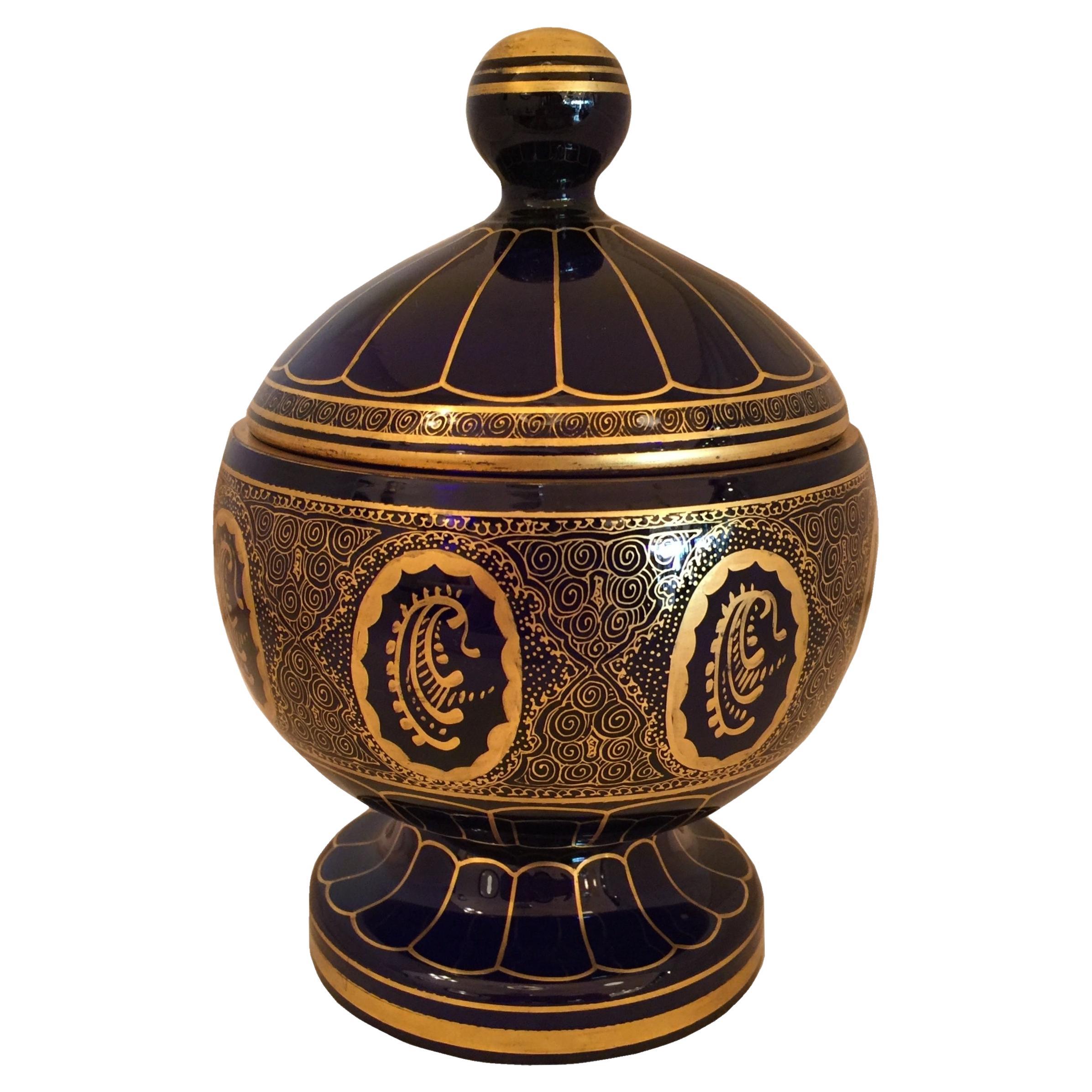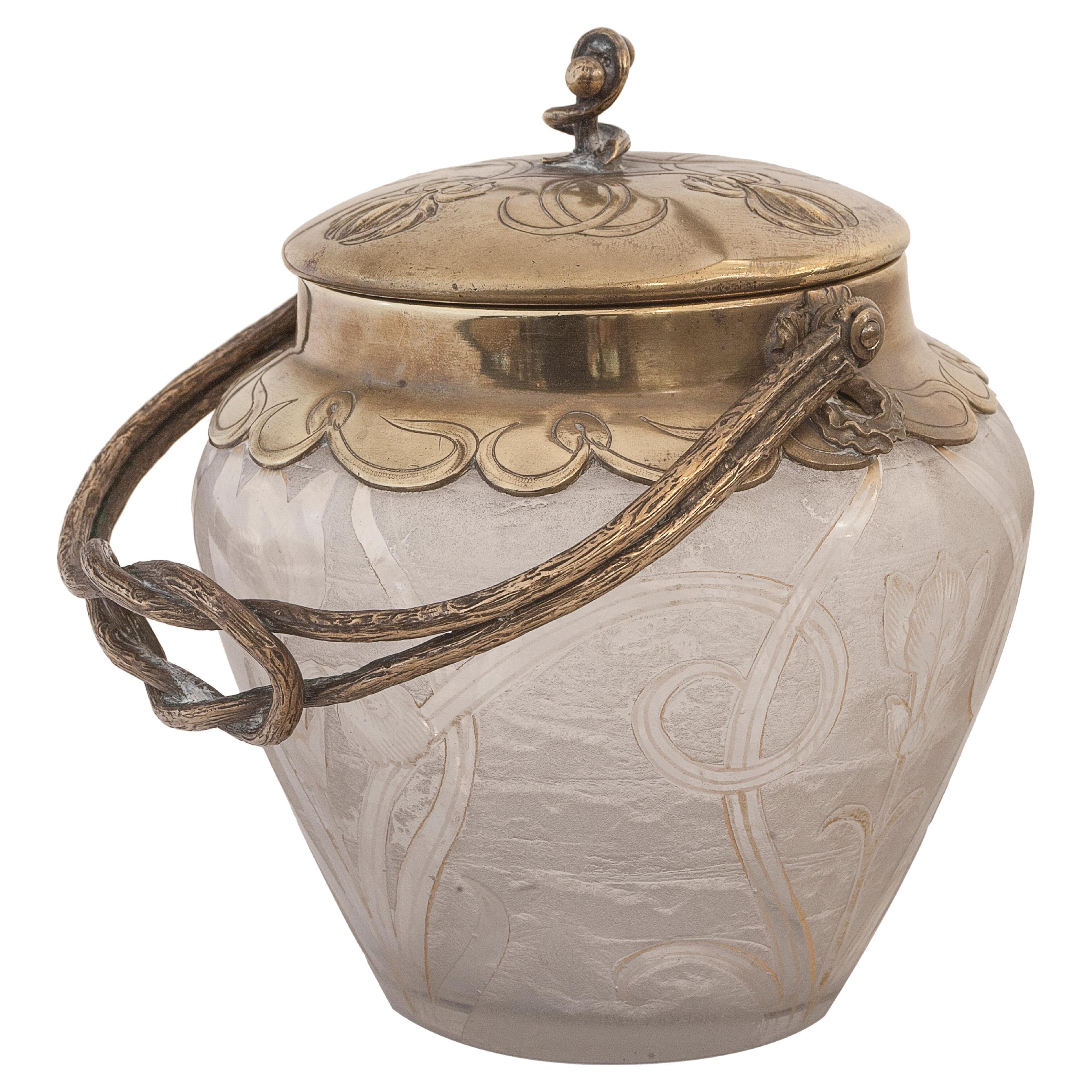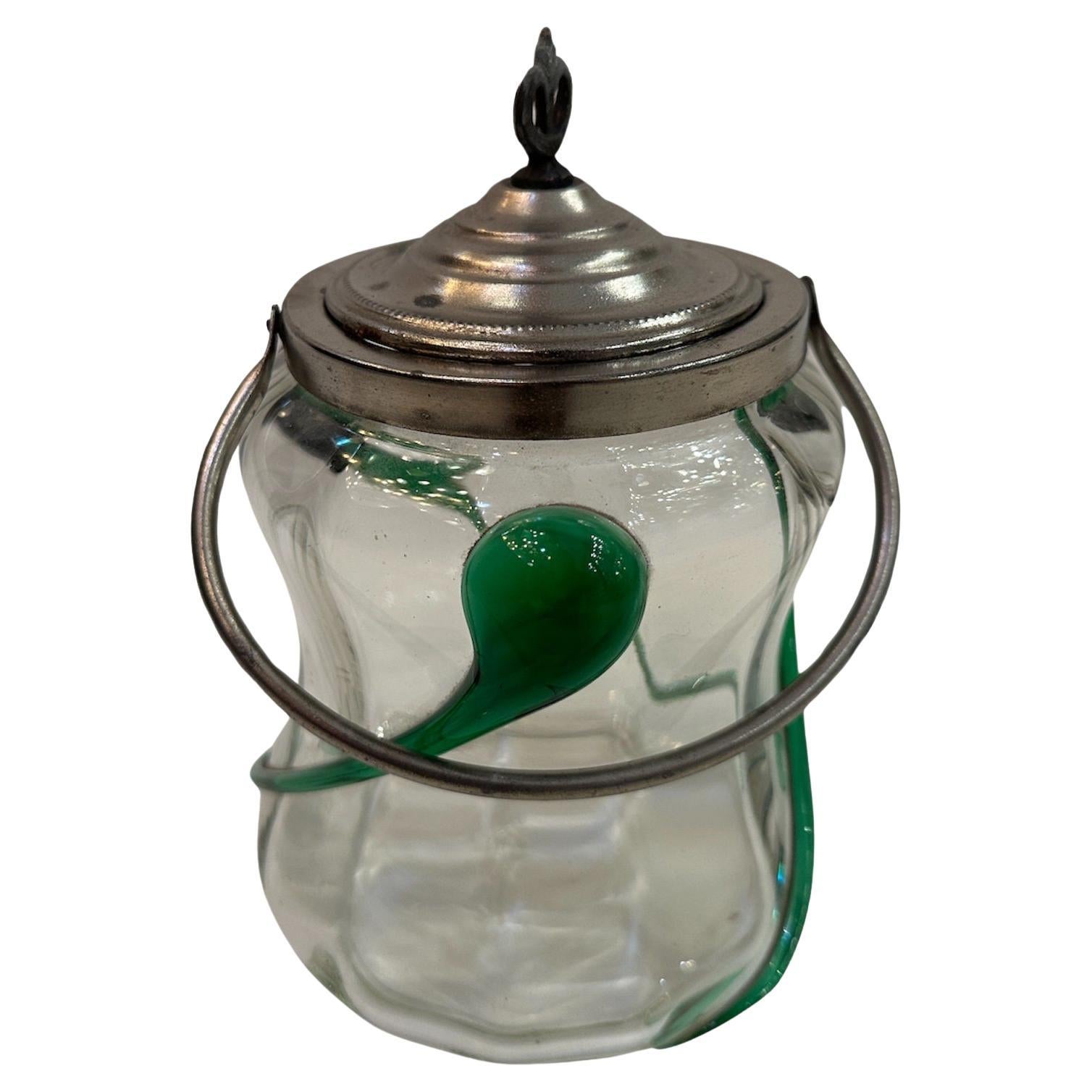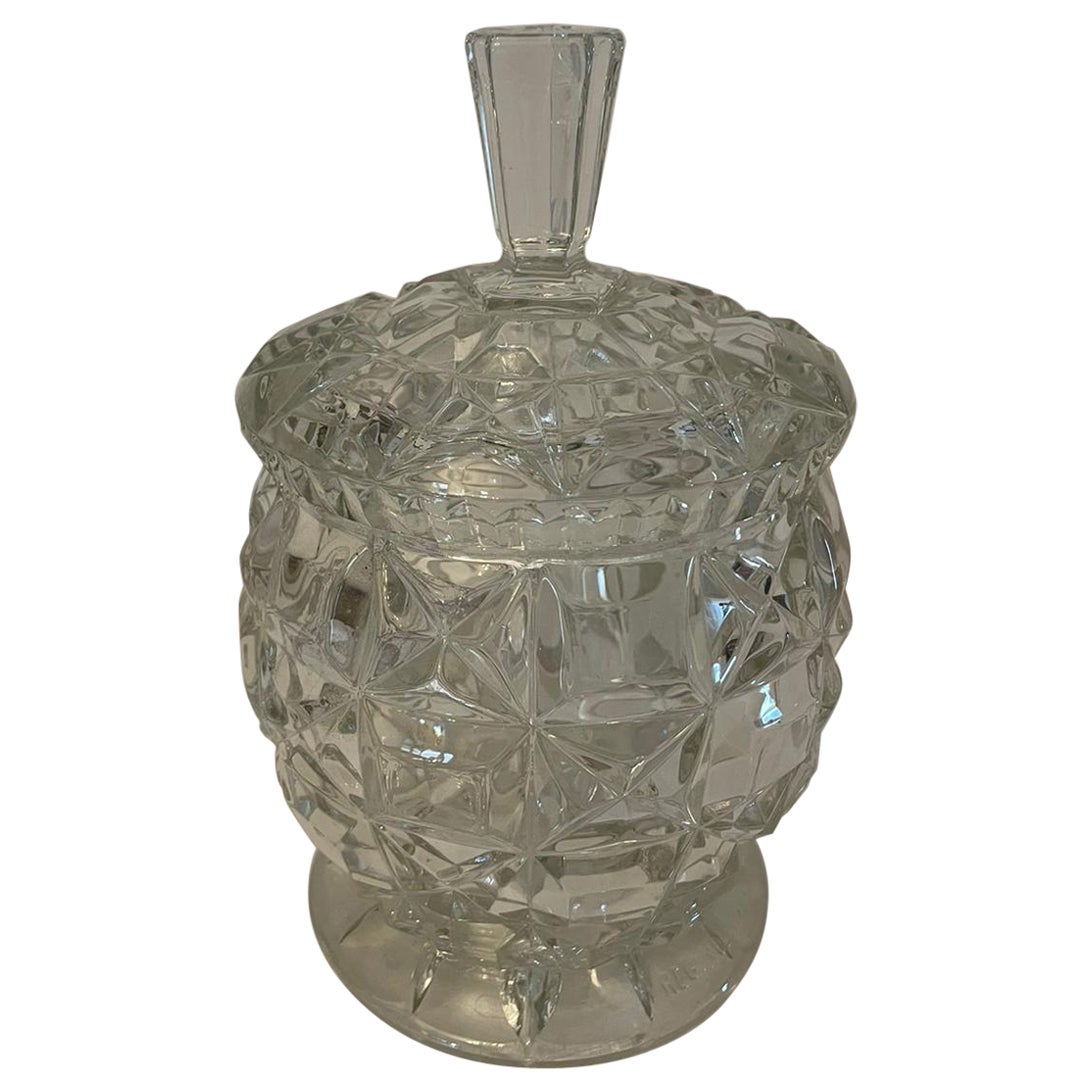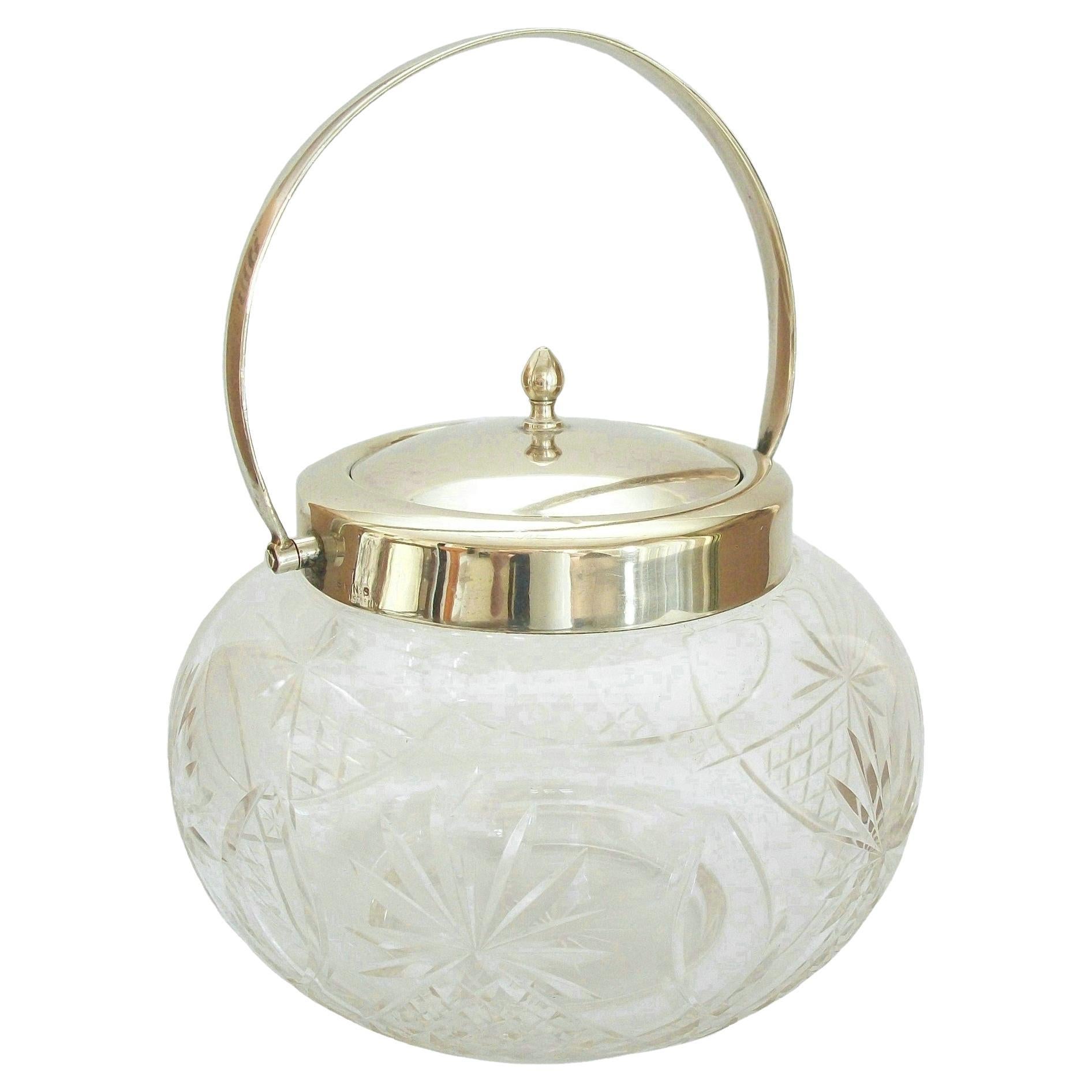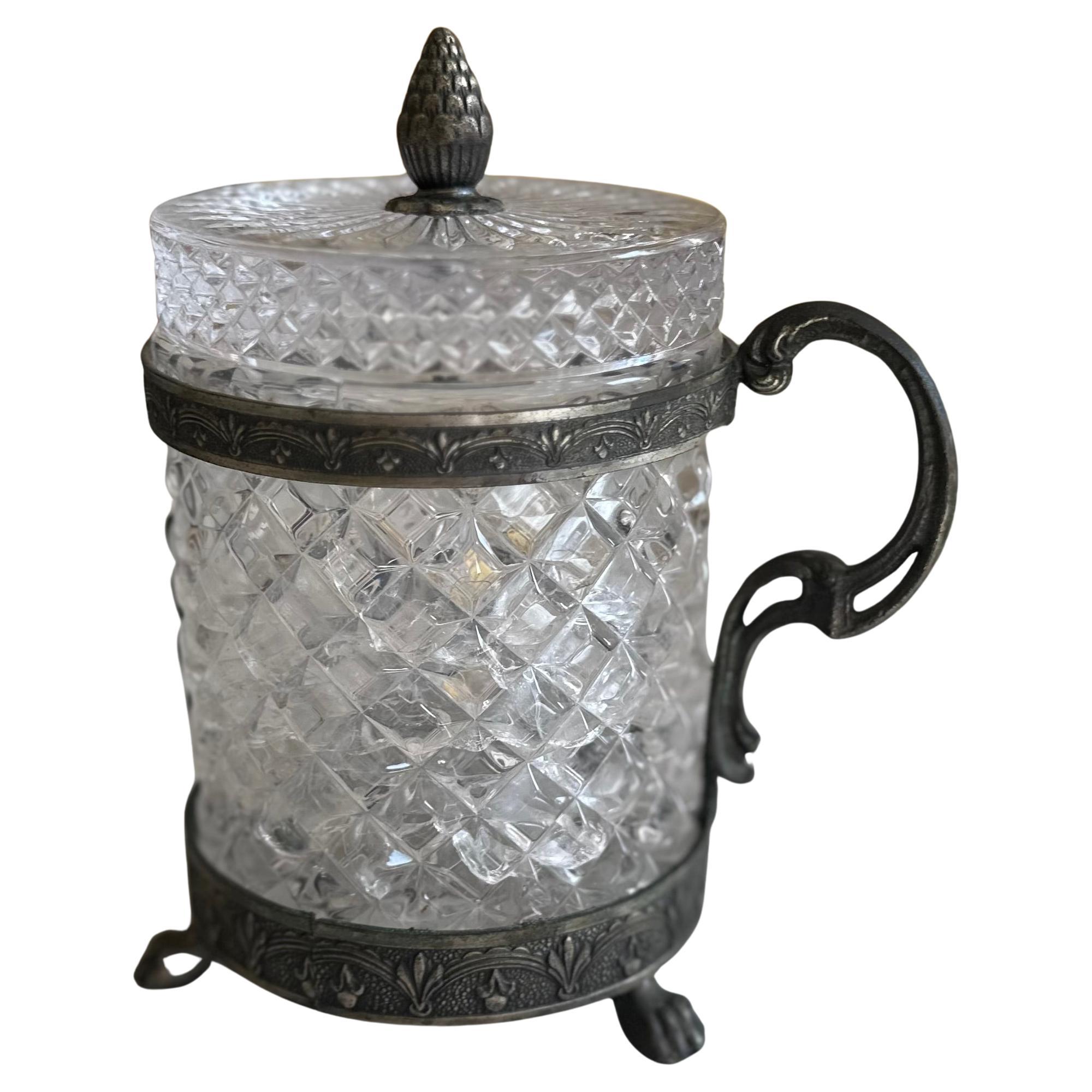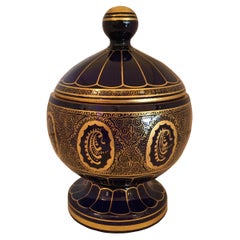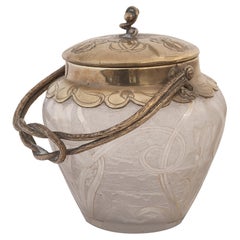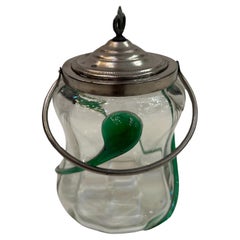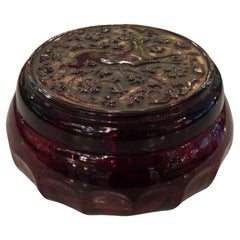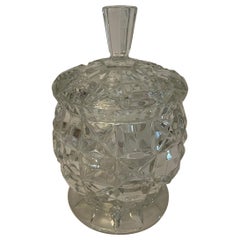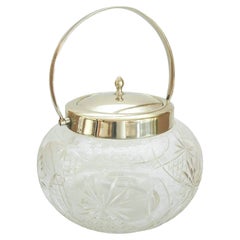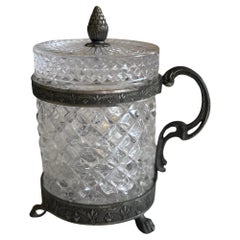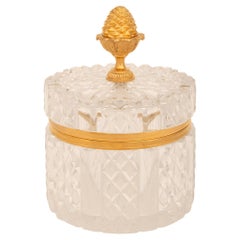Items Similar to Candy Maker in Crystal and Enamel, 19th Century
Video Loading
Want more images or videos?
Request additional images or videos from the seller
1 of 9
Candy Maker in Crystal and Enamel, 19th Century
$9,950
£7,752.98
€8,795.52
CA$14,300.39
A$15,746.10
CHF 8,165.04
MX$186,477.15
NOK 103,649.99
SEK 96,872.66
DKK 65,692.11
About the Item
We have specialized in the sale of Art Deco and Art Nouveau and Vintage styles since 1982. If you have any questions we are at your disposal.
Pushing the button that reads 'View All From Seller'. And you can see more objects to the style for sale.
19th century usually defined by concurrent revival styles, including Gothic, Neoclassicism and Rococo. The design reforms of the late century introduced the Aesthetic movement and the Arts and Crafts movement. The first decades of the 19th century were a period of relative peace and prosperity. Classical and Egyptian motifs were also adapted for decorative use. Mahogany and rosewood were popular and much furniture was japanned black, decorated with gilded lines and ornamental devices. Brass mounts and inlaid lines of brass and ebony were also fashionable. During this period, Dublin furniture firms such as Mack Williams and Gibton, George Gillington, Joshua Kearney, James Del Vecchio, and George Murray thrived. From the second half of the 19th century Robert Strahan adopted the current Victorian styles.
Why are there so many antiques in Argentina?
In the 1880 – 1940 there was a grate wave of immigration encouraged by the periods of war that were taking place.
1st World War took place between 1914 and 1918
2nd World War took place between 1939 and 1945
The immigrants options were New York or Buenos Aires. Tickets were cheap and in Buenos Aires they were welcomed with open arms, as it was a country where everything was still to be done.
Argentina was the country of new opportunities, labour was needed and religious freedom was assured, in many cases the of the family travel first until they were settled and then the rest of the family members join them.
In the immigrant museum “Ellis Island Immigrant Building” in New York you can se the promotional posters of the boats that would take them to a new life.
Between the years 1895 and 1896, Argentina had the highest DGP (gross domestic product) per capita in the world according to the Maddison Historical Statistics index, this situation arose due to the large amount of food being exported to European countries, which were at war.
The Argentinean ships left the port of Buenos Aires with food, but they returned with furniture, clothes and construction elements, (it´s common to see this the old buildings of the historic neighbourhood of San Telmo, the beams with the inscription “Made in England)”, as well as many markets that were built in Buenos Aires, such us the San Telmo Market, whose structure was brought by ship and afterwards assembled in 900 Defensa Street.
With the great influence of European immigrants living in the country, the children of the upper classes travelled to study in France, resulting in the inauguration of “La Maison Argentinienne”, on 27th of June 1928, in the international city of Paris, which hosted many Argentinians that were studying in Frace.
It´s the fourth house to be built after France, Canada and Belgium, being the first Spanish-speaking one. Still in place today (17 Bd Jourdan, 75014, Paris, France). Many of the children of these wealthy families who attended international art exhibitions, museums and art courses abroad, took a keen interest in the European style. This is why Buenos Aires was at the time referred as “The Paris of South America”.
Between the years 1890 and 1920 more than a hundred Palaces were built on Alvear Avenue the most exclusive avenue in Buenos Aires. Today some of these palaces have been transformed into museums, hotels and embassies.
In the year 1936, the Kavanagh building was inaugurated, it was the tallest reinforced concrete building in South America.
During 1994 the American Society of Civil Engineers distinguished it as an “international engineering milestone”, and it´s now considered a World Heritage of Modern Architecture.
At the time was common to hire foreign architects such as Le Corbusier, who visited Buenos Aires/Argentina in 1929 and in 1948 he drew up the blueprints for a house built in La Plata City (which was declared a World Heritage Site).
In 1947, the Hungarian architect Marcelo Breuer designed “Parador Ariston” in the seaside city of Mar del Plata. After an Argentinean student at Harvard University convinced him to come to Argentina. He worked on an urban development project in the Casa Amarilla, area of La Boca.
The Ukrainian architect, Vladimiro Acosta, arrives in Argentina in 1928 and worked as an architect until que moved to Brazil.
Antonio Bonet, a Spanish architect who worked with Le Corbusier in Paris, arrives in Argentina in 1937, where he carried out several architectural works and in 1938 designs the well-known BFK chair.
Andres Kálnay, of Hungarian origin, made around 120 architectural masterpieces, among which the former Munich brewery stands out, he even made the furniture’s design.
The German architect, Walter Gropius, director of the Bauhaus, lived in Argentina, where he wrote articles for “Sur” magazine and founded in Buenos Aires, an architectural firm with Franz Möller, who was also an architect, where he built two houses.
At the same time several famous designers decided to immigrate to Argentina, among them we can find the well-known French designer, Jean-Michel Frank, who arrived in the country in 1940 and also worked for the Rockefeller family.
Special pieces were made, which were sold exclusively in the country, such as the well-known German company “WMF”, who sold their products by catalogue, which were chosen by the ladies of high society in the list of wedding gifts, as well as the pieces designed by Christofle.
The Swiss sculptor Alberto Giacometti, made special pieces for Argentinean mansions.
In 1904 the first Jansen branch outside Paris was established in Buenos Aires, as the Argentinean clientele demanded a large amount of furniture, from the end of the 19th century to the mid-20th century.
In 1970, the brand Rigolleau Argentina made pieces authorised by Lalique.
The brands Maple and Thompson also set up shop in the country.
The French plastic artist, Marcel Duchamp moved to Argentina in 1918-1919.
Glass signed Gallé, Charder, Leverre, Schneider, Muller and other French firms. They were bought in flower shops and were given to ladies with beautiful floral arrangements.
Some furniture manufacturers travelled to international fairs and bough the patterns to produce the furniture in Argentina, such as the furniture firm Englander and Bonta, who bought the patterns ins Italy.
It is worth mentioning that in Argentina we have the largest community of Italians outside of Italy, as it is estimated that 70 percent of the inhabitants have at least one Italian descendant, followed by Spanish immigrants.
The most Important furniture stores in Argentina:
Comte is founded in 1934 (under the direct management of Jean Michel Frank in 1940).
Nordiska (Swedish company established in 1934).
Churba in 1960, a company that brought foreign designers to present their furniture in the country:
Denmark: (Arne Jacobsen, Finn Juhl, Bender Madsen, Ejner Larsen, Poul Kjaerholm, Hans Wegner)
Sweden: (Hans Agne Jakobsson, Gustavsberg)
United States: (Herman Miller)
Finland: (Lisa Johansson, Folke Arstrom, Tapio Wirkkala, Alvar Aalto, Timo Sarpaneva)
Swedish Factory: (Orrefors)
Italy: (Littala, Vico Magistretti, Emma Gismondi, Gae Aulenti, Angelo Mangiarotti, Elio Martinelli, Gianna Celada, Angelo Mangiarotti, Mario Bellini, Carlo Scarpa)
Finland: (Olivia Toikka)
Plata Lappas (Lappas Silver): a goldsmith shop founded in 1887 in Argentina by Alcibiades Lappas of Greek origin.
In 2019, in Argentina took place “the Art Deco world congress”, in which we participated as hosts invited by Geo Darder, founder of the Copperbridge – Foundation, in which prominent people from all over the world attended to learn about Art Deco in Argentina.
Argentina currently has more than 100 Art Deco buildings and another 90 Art Nouveau buildings throughout the city of Buenos Aires.
Argentina is a country that has not been involved in many wars, which is why it has been a refuge for works of art and antiques from different periods of time, unlike European countries. That is way many collectors, museums and antique dealers from all over the world visit it, you should not miss the opportunity to visit this great country.
Laura Guevara Kjuder, architect.
- Dimensions:Height: 8.67 in (22 cm)Diameter: 5.52 in (14 cm)
- Style:Belle Époque (Of the Period)
- Materials and Techniques:
- Place of Origin:
- Period:1900-1909
- Date of Manufacture:1900
- Condition:Wear consistent with age and use.
- Seller Location:Ciudad Autónoma Buenos Aires, AR
- Reference Number:Seller: M-2431stDibs: LU6785232633632
About the Seller
5.0
Vetted Professional Seller
Every seller passes strict standards for authenticity and reliability
Established in 1982
1stDibs seller since 2022
40 sales on 1stDibs
Typical response time: <1 hour
- ShippingRetrieving quote...Shipping from: Ciudad Autónoma Buenos Aires, Argentina
- Return Policy
More From This Seller
View AllCandy Maker Viennese Secession, 1900, in Crystal and Gold
Located in Ciudad Autónoma Buenos Aires, C
Style: Vienna Secession
If you have any questions we are at your disposal.
We have specialized in the sale of Art Deco and Art Nouveau styles since 1982.If you have any questions we ...
Category
Antique Early 1900s Austrian Vienna Secession Decorative Boxes
Materials
Crystal, Gold
Candy Maker Art Nouveau, 1900, in Crystal and Bronze
Located in Ciudad Autónoma Buenos Aires, C
We have specialized in the sale of Art Deco and Art Nouveau and Vintage styles since 1982. If you have any questions we are at your disposal.
Pushing the button that reads 'View All ...
Category
Antique Early 1900s French Art Nouveau Decorative Boxes
Materials
Crystal, Bronze
Container for candy or cookies in crystal and Murano, 1940
Located in Ciudad Autónoma Buenos Aires, C
We have specialized in the sale of Art Deco and Art Nouveau styles since 1982.If you have any questions we are at your disposal.
Pushing the button that reads 'View All From Seller'....
Category
Vintage 1940s Italian Art Deco Decorative Boxes
Materials
Crystal, Metal
Box in glass, Style: Viennese secession, made in France
Located in Ciudad Autónoma Buenos Aires, C
Box in art Glass
We have specialized in the sale of Art Deco and Art Nouveau and Vintage styles since 1982. If you have any questions we are at your disposal.
Pushing the button that...
Category
Antique Early 1900s French Vienna Secession Glass
Materials
Art Glass
Bottle in Crystal, France, 1930, Art Deco
Located in Ciudad Autónoma Buenos Aires, C
We have specialized in the sale of Art Deco and Art Nouveau and Vintage styles since 1982. If you have any questions we are at your disposal.
Pushing the button that reads 'View All ...
Category
Vintage 1930s French Art Deco Barware
Materials
Crystal
Bottle in Crystal, France, Sign Baccarat France
Located in Ciudad Autónoma Buenos Aires, C
Baccarat
Created under the reign of Louis XV, the crystal manufactory owes its international reputation to its participation all along the 19th century and until 1937 to the importan...
Category
Vintage 1930s French Art Deco Barware
Materials
Crystal
You May Also Like
Antique Edwardian Quality Cut Glass Biscuit Barrel
Located in Suffolk, GB
Antique Edwardian quality cut glass biscuit barrel having a quality cut glass biscuit barrel with the original lift off lid. Small chip to the inside...
Category
Early 20th Century English Edwardian Glass
Materials
Cut Glass
Cut Crystal & Silverplate Biscuit Barrel - United Kingdom - Early 20th Century
Located in Chatham, ON
Vintage clear cut crystal and silverplate biscuit barrel - featuring a removeable lid and adjustable handle - unsigned - United Kingdom (Eng...
Category
Early 20th Century British Victorian Glass
Materials
Crystal, Silver Plate
$437 Sale Price
30% Off
Italian Art Nouveau Rock Crystal Jar with Lid – Faceted Cut and Ornamental Mount
Located in Hamburg, DE
This exquisite lidded jar, which could also serve as a bonbonnière or sugar bowl, is crafted from approximately 1 kilogram of hand-carved rock crystal. The crystal body has been care...
Category
Antique 1890s Italian Art Nouveau Decorative Boxes
Materials
Rock Crystal, Metal
French 19th century Charles X st. Baccarat Crystal and Ormolu box
By Baccarat
Located in West Palm Beach, FL
An elegant and high quality French 19th century Charles X st. Baccarat Crystal and Ormolu box. This lovely circular lidded box has a star like cut design on the underside while havin...
Category
Antique 19th Century French Charles X Decorative Boxes
Materials
Crystal, Ormolu
Antique ABP American Brilliant Period Cut Glass Tea Caddy
Located in Philadelphia, PA
A fine antique ABP cut glass tea caddy.
In the Strawberry Diamond & Fan pattern.
Comprising a cut glass body, conforming internal cover, and cut gl...
Category
Early 20th Century American Art Nouveau Glass
Materials
Cut Glass
Dutch Crystal Tea Caddy with Silver cap, by Van Kempen & Zn, 1862
By Van Kempen
Located in Delft, NL
Dutch Crystal Tea Caddy with Silver cap, by Van Kempen & Zn, 1862
A Dutch octagonal crystal tea caddy with silver cap. A beautiful flower on top of the cap. The tea caddy is made by...
Category
Antique 19th Century Dutch Tea Sets
Materials
Crystal, Silver
More Ways To Browse
Mid Century Danish Directors Chairs
Vintage Candy Dishes
Antique Candy
Arts And Crafts Furniture Canadian
Art Deco Black Enamel Box
Silver Antique Japanese Boxes Silver Boxes
Mahogany 19th Century Bedroom Sets
Rosewood Mid Century Modern Bedroom Set
Mahogany Mid Century Modern Bedroom Set
Del Vecchio
Mack Gibton
Robert Strahan
Williams And Gibton
Mack Williams And Gibton
Italian Green Onyx
White Porcelain Boxes
Chinese Chinoiserie Box
Papier Mache Box
